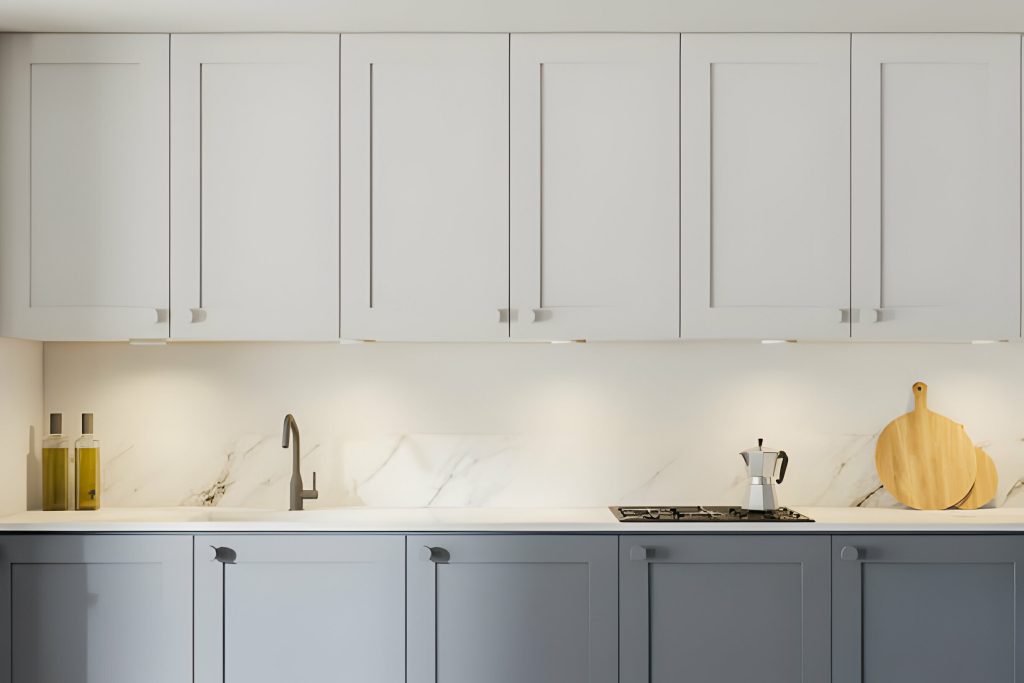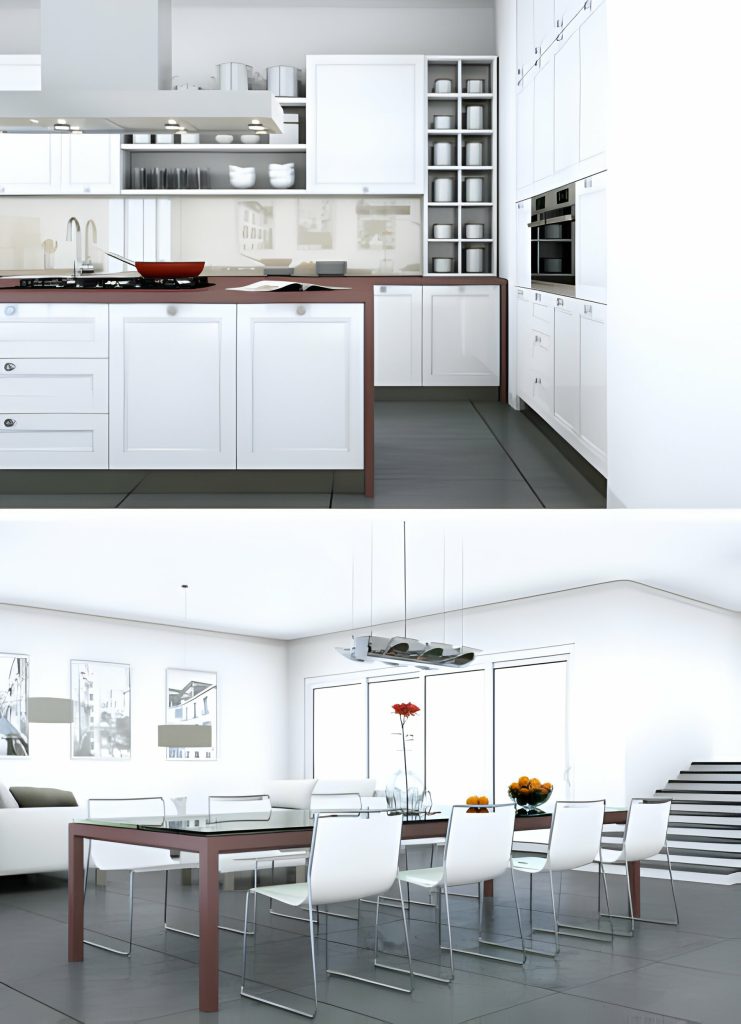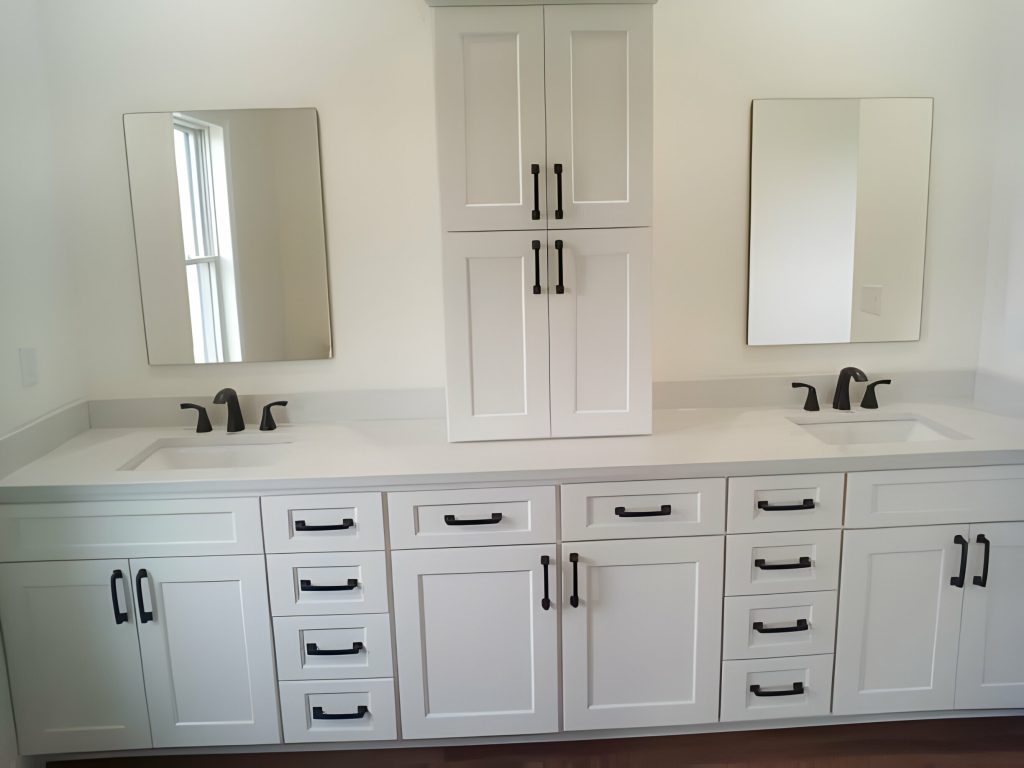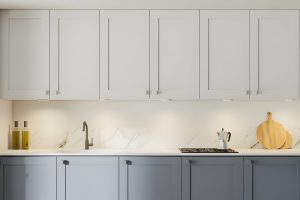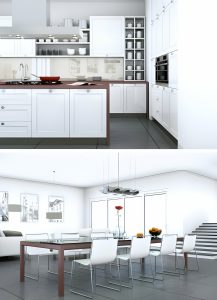Are your painted kitchen cabinet doors looking worn and dated? Don’t worry, restoring them is easier than you think! In this article, we’ll show you step-by-step how to bring new life to your cabinets. Assess the condition, remove the doors and hardware, clean and prep the surfaces, repair any damage, apply a fresh coat of paint or stain, and finally, reinstall the doors and hardware. Get ready to transform your kitchen with this simple and effective restoration process!
Assess the Current Condition
Assess your painted kitchen cabinet doors’ current condition by examining any visible chips, scratches, or discoloration. Evaluating the level of damage is crucial before proceeding with any restoration process. Start by inspecting for scratches and dents on the surface of the doors. Use your fingertips to feel for any imperfections that may have gone unnoticed. Pay close attention to high-traffic areas, as these are more prone to wear and tear. Document any significant damage you find to better prioritize your restoration efforts.
Next, examine the color fading on your cabinet doors. Over time, exposure to sunlight and moisture can cause the paint to fade or discolor. Look for any uneven patches or areas where the original color has dulled. Take note of the extent of the fading to determine the best course of action.
Additionally, check for any visible chips or peeling paint. These can be signs of a poor paint job or the need for touch-ups. Inspect the edges and corners of the doors, as these are common areas where chips occur. A thorough evaluation of your painted kitchen cabinet doors’ condition will help you plan and execute the necessary restoration steps effectively.
Remove Cabinet Doors and Hardware
To properly restore your painted kitchen cabinet doors, begin by removing the cabinet doors and hardware. This step is crucial as it allows you to work on the doors more efficiently and ensures that you don’t accidentally damage any hardware during the restoration process. Follow these steps to remove the cabinet doors and hardware:
- Start by emptying the cabinets and removing any items stored inside. This will make it easier to access the doors and hardware.
- Use a screwdriver to remove the screws that hold the cabinet doors in place. Keep these screws in a safe place, as you will need them later when reassembling the doors.
- Once the doors are removed, it’s time to protect the hardware. You can use painter’s tape to cover the hinges, handles, and any other hardware you want to preserve. This will prevent paint chips or damage during the restoration process.
- Place the removed doors in a clean and well-ventilated area where you can work on them comfortably. Make sure to lay them flat to prevent warping.
Clean and Prep the Surfaces
To effectively restore your painted kitchen cabinet doors, it is essential to thoroughly clean and prepare the surfaces. Before starting any restoration work, it is important to remove any dirt, grease, or grime that may have accumulated on the cabinet doors over time. One of the most effective cleaning techniques is to use a mixture of warm water and mild dish soap. Simply dip a sponge or cloth into the soapy water and gently scrub the surfaces of the cabinet doors. Be sure to pay extra attention to areas that are prone to buildup, such as around handles and knobs. After cleaning, rinse the doors with clean water and dry them thoroughly with a clean cloth.
Once the surfaces are clean, it is time to prepare them for restoration. Start by lightly sanding the cabinet doors using fine-grit sandpaper. This will help to remove any remaining paint or varnish, as well as smooth out any imperfections. After sanding, wipe away any dust with a damp cloth and allow the doors to dry completely before moving on to the next step.
Repair Any Damage
Inspect the cabinet doors for any damage that needs to be repaired before proceeding with the restoration process. It’s important to address any scratches or dents to ensure a smooth and flawless finish. Here’s how you can repair these imperfections:
- Repairing Scratches:
- Start by cleaning the scratched area with a mild soap and water solution.
- Gently sand the scratch using fine-grit sandpaper until the surface is smooth.
- Apply a matching touch-up paint using a small brush or a cotton swab.
- Allow the paint to dry completely before applying a second coat, if necessary.
- Once the touch-up paint has dried, gently buff the area with a soft cloth to blend it with the surrounding surface.
- Filling in Dents:
- Clean the dented area with a mild soap and water solution.
- Use a putty knife to apply a wood filler or epoxy filler to the dent.
- Smooth out the filler with the putty knife, ensuring it is level with the surrounding surface.
- Allow the filler to dry completely before sanding it down with fine-grit sandpaper.
- Finish off by applying a matching touch-up paint to the filled area, following the steps mentioned earlier.
Apply a Fresh Coat of Paint or Stain
Now that you have repaired any damage to your painted kitchen cabinet doors, it’s time to apply a fresh coat of paint or stain. The first step is choosing the right color that will complement your kitchen decor. Once you have made your selection, it’s important to properly prepare the surface by cleaning it thoroughly and sanding it down to create a smooth and even base for the paint or stain to adhere to.
Choosing the Right Color
To choose the right color for your painted kitchen cabinet doors, start by considering your personal style and the overall aesthetic of your kitchen. The color you choose will greatly impact the look and feel of your kitchen, so it’s important to make a choice that complements your taste and enhances the space. Here are some factors to consider when selecting the perfect color for your cabinet doors:
- Color options: There is a wide range of colors to choose from, including neutrals like white, gray, and beige, as well as bold hues like blue, green, and red. Think about the mood you want to create in your kitchen and how different colors can contribute to that.
- Color psychology: Different colors have different psychological effects. For example, blue is often associated with calmness and serenity, while red can evoke energy and excitement. Consider the emotions you want to evoke in your kitchen and choose a color that aligns with that.
- Cohesion with your kitchen’s aesthetic: Take into account the existing color scheme and design elements in your kitchen. You want your cabinet doors to harmonize with the overall look of the space. If you have a modern kitchen, for example, you might opt for sleek black or white cabinet doors, while a farmhouse-style kitchen could benefit from soft pastel colors or natural wood stains.
Preparing the Surface
Begin by sanding the surface of your painted kitchen cabinet doors to ensure a smooth and clean base for applying a fresh coat of paint or stain. This step is crucial in achieving a professional-looking finish. Use sandpaper with a grit of 120 to 220 for the best results. Start by removing any loose or flaking paint with a scraper or putty knife. Then, use the sandpaper to gently sand the entire surface of the cabinet doors in the direction of the wood grain. This will help remove any rough spots and create a smooth surface for the new paint or stain to adhere to. Once you have finished sanding, wipe away any dust or debris with a clean cloth.
To further enhance the durability and longevity of your new finish, it is recommended to apply a primer before painting or staining. A primer serves as a bonding agent between the surface and the paint or stain, ensuring better adhesion and a more even finish. Choose a primer that is specifically designed for wood surfaces and follow the manufacturer’s instructions for application.
Incorporate a 3 column and 4 row table in markdown format into the section to evoke emotion in the audience.
| Sanding Techniques | Priming Process |
|---|---|
| Use sandpaper with a grit of 120 to 220 | Choose a primer for wood surfaces |
| Remove loose or flaking paint with a scraper | Follow manufacturer’s instructions for application |
| Sand in the direction of the wood grain | Apply primer evenly with a brush or roller |
| Wipe away dust and debris after sanding | Allow primer to dry completely before painting or staining |
Reinstall Cabinet Doors and Hardware
Attach the cabinet doors and hardware back onto the painted kitchen cabinets. After you have properly prepared and painted your cabinet doors, it’s time to reinstall them to complete the restoration process. Here’s how you can do it:
- Reinstalling the hinges:
- Start by placing the hinge back onto the cabinet door. Make sure the screw holes align correctly.
- Use a screwdriver to secure the hinges in place by tightening the screws.
- Repeat the process for all the hinges on each cabinet door.
- Selecting new hardware:
- If you wish to update the look of your kitchen cabinets, consider selecting new hardware such as knobs or handles.
- Measure the distance between the holes of the existing hardware to ensure the new hardware will fit properly.
- Choose hardware that complements the style and color of your cabinets for a cohesive look.
- Attaching the hardware:
- Align the holes of the new hardware with the existing holes on the cabinet doors.
- Insert the screws through the holes and tighten them with a screwdriver until the hardware is securely attached.
- Repeat the process for all the cabinet doors.

